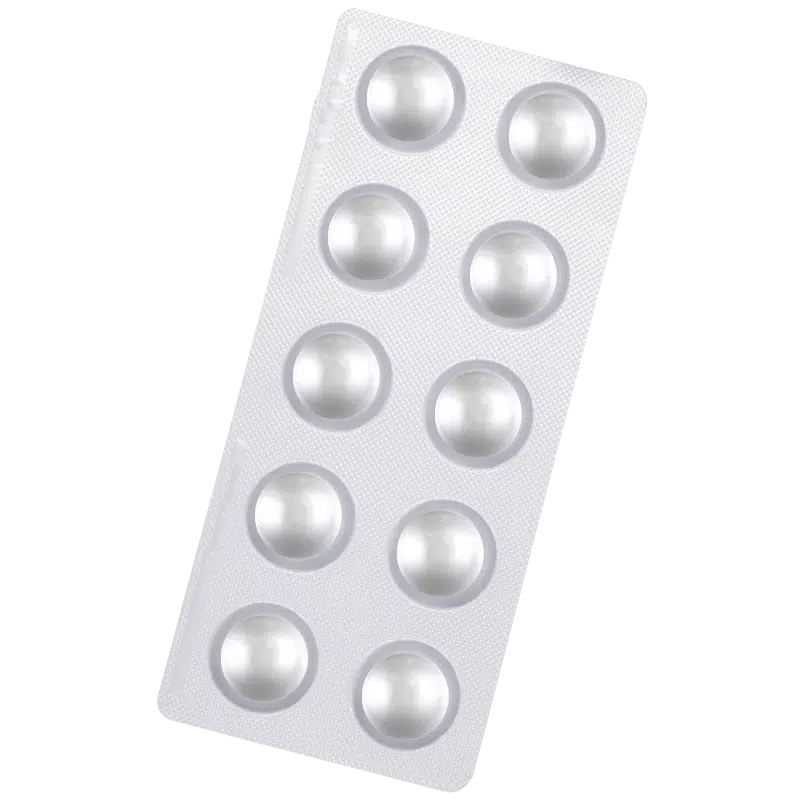Treats high cholesterol simply, quickly and effectively.


Atorvastatin is used to lower cholesterol if you’ve been diagnosed with high levels in your blood or you have a family history of heart disease.
Answer a few questions about your health, and our experts will advise you on the right treatment options for you. Order Atorvastatin online on subscription.
Atorvastatin tablets are used to lower high cholesterol simply, quickly and effectively. They belong to a group of medicines known as statins. You take statins if you’ve been diagnosed with high blood cholesterol, as they lower cholesterol levels. They can also reduce the risk of heart disease, like strokes and heart attacks, in patients.
Atorvastin is a prescription only treatment, and comes in the form of a regular or chewable tablet. If you have a family history of heart disease, or a long-term health problem like rheumatoid arthritis or type 1 or type 2 diabetes, it may be a suitable treatment option for you.
Atorvastatin works in two ways to lower cholesterol. It blocks the enzyme that creates cholesterol, which prevents the liver from producing it. The reduced production of cholesterol then lowers the overall concentration of it in the blood.
The second way Atorvastatin works is by helping with the reabsorption of existing cholesterol. Cholesterol is needed by your body to perform certain tasks. When it’s low, your body will reabsorb cholesterol that has built up in your arteries. This normally exists as plaques that are made up of LDLs (low-density lipoprotein), which is classed as “bad” cholesterol.
You can purchase atorvastatin in four different doses; 10mg, 20mg, 40mg and 80mg. The right dose for you will depend on the levels of cholesterol in your body, and our clinical team can guide you on this. The typical starting dosage for adults between the ages of 18-64 years old is 20mg once a day. The dose might be lowered or increased depending on how much it reduces your cholesterol levels or causes unwanted side effects. The typical maintenance dosage for this age bracket is 10-80mg once a day.
Atorvastatin has not been approved for children under the age of 10. Your dosage could be lowered once you’re over 65, as your kidneys may not function as well as they used to, which can lead to your body processing drugs at a slower rate. This may increase your risk of experiencing side effects, like headaches, nausea, diarrhoea and cold-like symptoms.

How we source info.
When we present you with stats, data, opinion or a consensus, we’ll tell you where this came from. And we’ll only present data as clinically reliable if it’s come from a reputable source, such as a state or government-funded health body, a peer-reviewed medical journal, or a recognised analytics or data body. Read more in our editorial policy.

How we source info.
When we present you with stats, data, opinion or a consensus, we’ll tell you where this came from. And we’ll only present data as clinically reliable if it’s come from a reputable source, such as a state or government-funded health body, a peer-reviewed medical journal, or a recognised analytics or data body. Read more in our editorial policy.
Have something specific you want to know? Search our info below, or ask our experts a question if you can’t find what you’re looking for.
Statins: mechanism of action and effects. Journal of Cellular and Molecular Medicine, 5(4), pp.378-387.
Atorvastatin: a medicine used to lower cholesterol.
High‐Intensity Versus Non‐High‐Intensity Statins in Patients Achieving Low‐Density Lipoprotein Cholesterol Goal After Percutaneous Coronary Intervention. Journal of the American Heart Association, 7(21).
Atorvastatin Efficacy in the Primary and Secondary Prevention of Cardiovascular Events. Drugs, 67 (Supplement 1), pp. 29-42.

Registered with GMC (No. 4624794)
Meet Daniel
Registered with GPhC (No. 2202465)
Meet Sanjeda
Registered with GPhC (No. 2070724)
Meet CraigDelivery, consultation, treatment. It’s all included in the price.
| Quantity | Starting from |
|---|---|
| 28 Tablets | £22.95 |
| 56 Tablets | £34.95 Save £10.95 |
| 84 Tablets | £45.95 Save £22.90 |
| Quantity | Starting from |
|---|---|
| 28 Tablets | £24.95 |
| 56 Tablets | £35.95 Save £13.95 |
| 84 Tablets | £47.95 Save £26.90 |
| Quantity | Starting from |
|---|---|
| 28 Tablets | £24.95 |
| 56 Tablets | £35.95 Save £13.95 |
| 84 Tablets | £47.95 Save £26.90 |
| Quantity | Starting from |
|---|---|
| 28 Tablets | £22.95 |
| 56 Tablets | £34.95 Save £10.95 |
| 84 Tablets | £45.95 Save £22.90 |
| Quantity | Starting from |
|---|---|
| 28 Tablets | £53.95 |
| 56 Tablets | £93.95 Save £13.95 |
| 84 Tablets | £132.95 Save £28.90 |
| Quantity | Starting from |
|---|---|
| 28 Tablets | £74.95 |
| 56 Tablets | £132.95 Save £16.95 |
| 84 Tablets | £189.95 Save £34.90 |
| Quantity | Starting from |
|---|---|
| 28 Tablets | £53.95 |
| 56 Tablets | £93.95 Save £13.95 |
| 84 Tablets | £132.95 Save £28.90 |
| Quantity | Starting from |
|---|---|
| 28 Tablets | £68.95 |
| 56 Tablets | £124.95 Save £12.95 |
| 84 Tablets | £179.95 Save £26.90 |
| Quantity | Starting from |
|---|---|
| 28 Tablets | £71.95 |
| 56 Tablets | £128.95 Save £14.95 |
| 84 Tablets | £186.95 Save £28.90 |
| Quantity | Starting from |
|---|---|
| 28 Tablets | £24.95 |
| 56 Tablets | £35.95 Save £13.95 |
| 84 Tablets | £47.95 Save £26.90 |
| Quantity | Starting from |
|---|---|
| 28 Tablets | £24.95 |
| 56 Tablets | £35.95 Save £13.95 |
| 84 Tablets | £47.95 Save £26.90 |
| Quantity | Starting from |
|---|---|
| 28 Tablets | £24.95 |
| 56 Tablets | £35.95 Save £13.95 |
| 84 Tablets | £47.95 Save £26.90 |
| Quantity | Starting from |
|---|---|
| 28 Tablets | £22.95 |
| 56 Tablets | £34.95 Save £10.95 |
| 84 Tablets | £45.95 Save £22.90 |
We know health, but you know you.
Our experts tell you what’s safe, but you decide what’s best.
Answer a few questions and tell us about yourself. Get tailored advice from our clinicians so you can choose better.

Choose your treatment and how often you have it delivered.

We know things change. It’s the nature of life. We’ll check in regularly to make sure your treatment is still right for you.
Pause. Change. Skip. Start again. Any time you like.
Always arrives on time and I’m kept informed of progress.
I have had it previously from my G.P so It worked as expected, extremely well. My problem is an accessing my G.P practice, they put ED well down their list of priorities. I found your service excellent, quick and efficient. I fully intend to continue using it
Shipping is speedy and the product is amazing.
Fast, slick service. Very easy to amend subscription when required.
All good.
Great service
Really helped me
Trusted service and great service - next day delivery and I can rely on them to send regularly.
Ordering was straight forward, tablets delivered promptly and well packaged, and instructions were clear, thanks.
100% recomended.Great service
Excellent service
Excellent delivery. Can’t fault.
Quick and efficient service, delivered discreetly the next day. Thank you.
Effective
Great service, no wait time
Great
Quick assessing for medicine suitability. Quick delivery and good communication throughout.
Straightforward and quick service!
Good however communication could sometimes be better
Easy and good procedure to get treatment
Excellent product
Excellent service!!! Ordered what I needed sent a picture of my prescription and the parcel arrived the next day!!! Will definitely order again and have recommended to others!!!
Fast shipping
Very quick service all round
So quick and simple. Recommend
Great
Very convenient hassle free service.
Easy to use good communication and fast shipping
Great service
Efficient no issues re delivery
Fabulous service
Brilliant service. Not a bad word to say!
It was fast, professional and it's the right med for what I selected in there.
This review requires content. Oh well..
Great service, quite effortless.
Top notch
Brill service
N/a
Excellent service quick and easy to use
Fast and exact order
Superb service and quick delivery 10/10
Excellent service
Thank you for fast delivery
Shipping is extremely quick and satisfiying
Good stuff
Good service
Great fast delivery
High cholesterol: Here are some other options.
Fast-acting treatment to lower cholesterol levels and reduce the risk of related health problems.
Branded oral treatment used to help reduce levels of 'bad' cholesterol in the blood.
A widely used tablet medication to lower cholesterol and help prevent a heart attack or stroke.
We're making healthcare more about you. Sign up to our newsletter for personalised health articles that make a difference.
Disclaimer: The information provided on this page is not a substitute for professional medical advice, diagnosis, or treatment. If you have any questions or concerns about your health, please talk to a doctor.
We couldn't find what you're looking for.
Here's everything we treat. Or, if you're looking for something we don't have yet, you can suggest something.
If there’s a particular treatment or condition you’re looking for, tell us and we’ll look into it for you.
Submit your question here, or tell us if you’ve found an issue on our site.
We’ll get back to you very soon. We aim to respond to all queries in one working day.
You’re signed up to our newsletter. Keep an eye on your inbox for our latest update.
By clicking 'Subscribe now' you're agreeing to our Privacy Policy.
We’ve sent you an email asking you to confirm your email address.